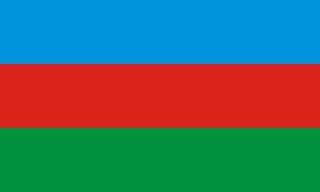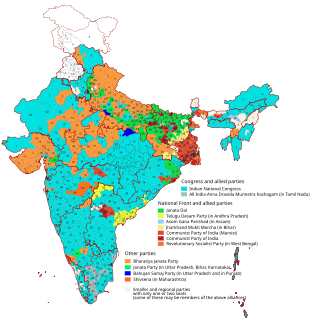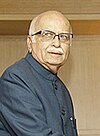The Janata Party was an amalgam of Indian political parties opposed to the Emergency that was imposed between 1975 and 1977 by Prime Minister Indira Gandhi of the Indian National Congress. In the 1977 general election, the party defeated the Congress and Janata leader Morarji Desai became the first non-Congress prime minister in independent modern India's history.

The Lok Janshakti Party (LJP) is a state political party in the state of Bihar, India. It is led by Ram Vilas Paswan. The party was formed in 2000 when Paswan split from Janata Dal (United). The party has considerable following amongst Dalits in Bihar. Currently the party is a member of the National Democratic Alliance.
Siwan is a Lok Sabha constituency in Bihar.

India held general elections to the 7th Lok Sabha in January 1980. The Janata Party alliance came into power after the elections to the 6th Lok Sabha held in 1977, riding the public anger against the Congress and the Emergency but its position was weak. The loose coalition barely held on to a majority with only 295 seats in the Lok Sabha and never quite had a firm grip on power.

General elections were held in India in 1991 to elect the members of the 10th Lok Sabha. The result of the election was that no party could get a majority, so a minority government was formed, resulting in a stable government for the next 5 years, under the new Prime Minister P.V. Narasimha Rao.

General elections were held in India in 1996 to elect the members of the 11th Lok Sabha contested by the Congress Party and Bharatiya Janata Party. The result of the election was a hung parliament with neither top two leading securing a mandate. The Bharatiya Janata Party formed a short lived government. United Front, consisting of non Congress, non BJP was created and secured support from 332 members out of the 545 seats in the Lok Sabha, resulting in H.D. Deve Gowda from the Janata Dal being the 11th Prime Minister of India. The 11th Lok Sabha produced three Prime Ministers in two years and forced the country back to the polls in 1998.
Chapra Lok Sabha constituency was a Lok Sabha (parliamentary) constituency in Bihar state in eastern India till 2008. In 2004, Lok Sabha polls were countermanded in Chapra following allegations of rigging. Re-poll was done on 31 May 2004. Lalu won the elections after the re-poll. In 2008, after the delimitation of parliamentary constituencies, Saran came into existence in place of it.
Sheohar Lok Sabha constituency is one of the 40 Lok Sabha (parliamentary) constituencies in Bihar state in eastern India. This constituency has been represented by veterans like Thakur Jugal Kishore Sinha an eminent freedom fighter and is known as the father of Cooperative Movement in India and Ram Dulari Sinha, former Union Minister and Governor, she happens to be the wife of Thakur Jugal Kishore Sinha, she was also a freedom fighter and the first women from Bihar to attain Master's degree.
Araria Lok Sabha constituency is one of the 40 Lok Sabha (parliamentary) constituencies in Bihar state in eastern India. It is unreserved.
Arrah Lok Sabha constituency is one of the 40 Lok Sabha (parliamentary) constituencies in Bihar state in eastern India.
Purnia Lok Sabha constituency is one of the 40 Lok Sabha (parliamentary) constituencies in Bihar state in eastern India.
Banka Lok Sabha constituency is one of the 40 Lok Sabha constituencies in Bihar state in eastern India. This comprises the Banka district.
Bhagalpur Lok Sabha constituency is one of the 40 Lok Sabha (parliamentary) constituencies in Bihar state in eastern India.
Buxar Lok Sabha constituency is one of the 40 Lok Sabha (parliamentary) constituencies in Bihar state in eastern India.
Sasaram Lok Sabha constituency is one of the 40 Lok Sabha (parliamentary) constituencies in Bihar state in eastern India.
Nawada Lok Sabha constituency is one of the 40 Lok Sabha (parliamentary) constituencies in Bihar state in eastern India.
Third Front in Indian politics refers to various alliances formed by smaller parties at various points of time since 1989 to offer a third option to Indian voters, challenging the Indian National Congress and Bhartiya Janata Party.

















